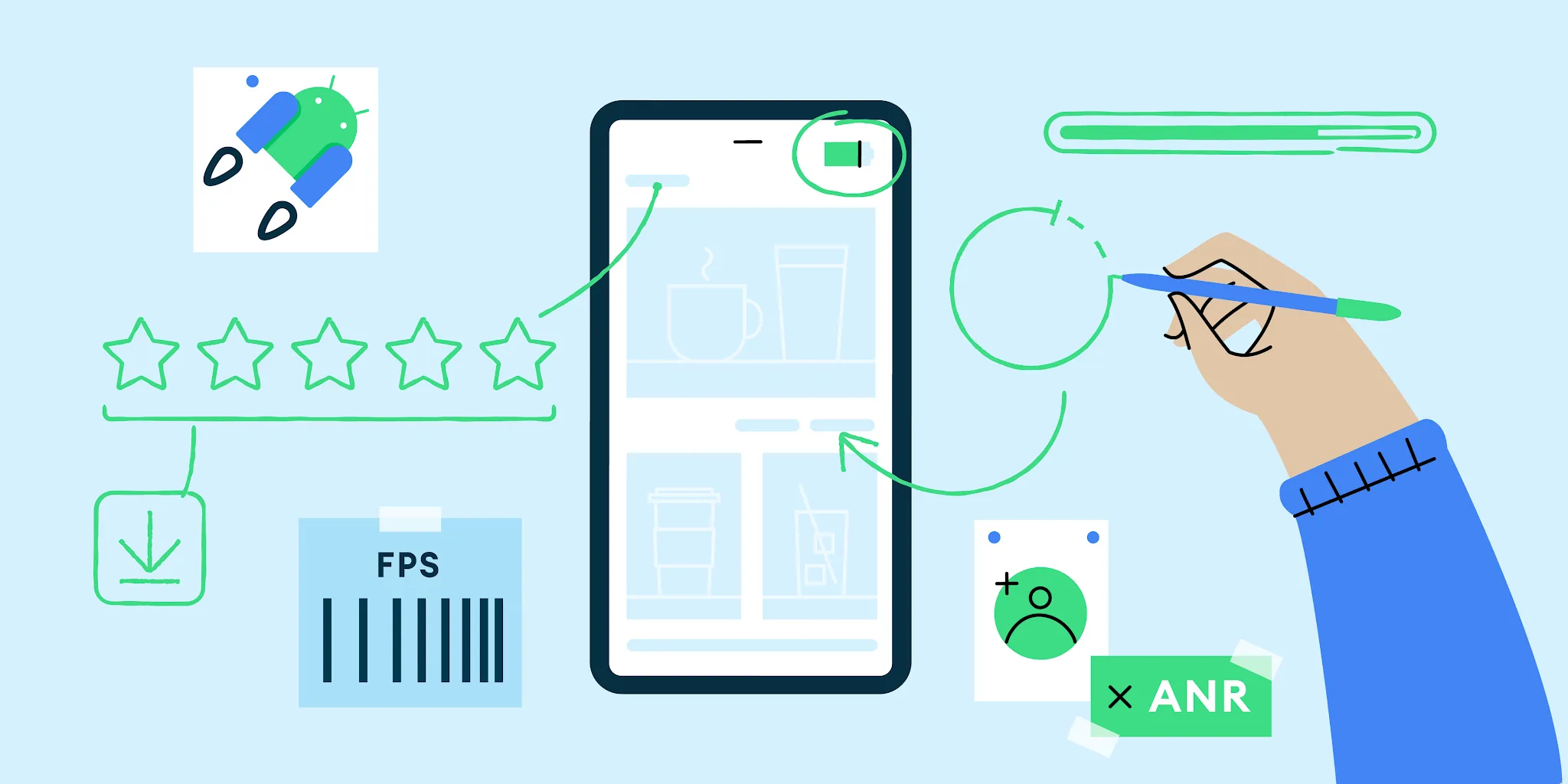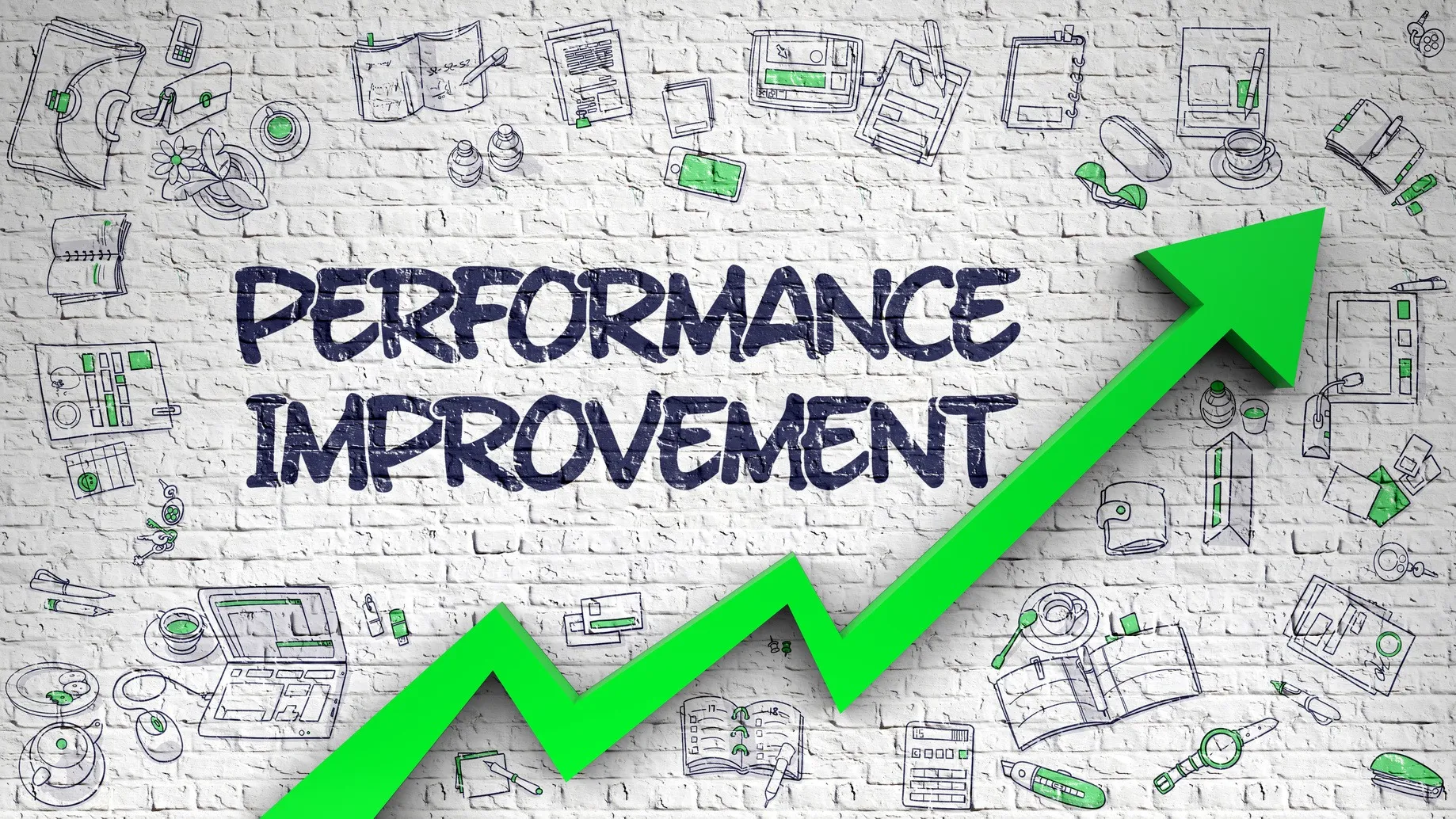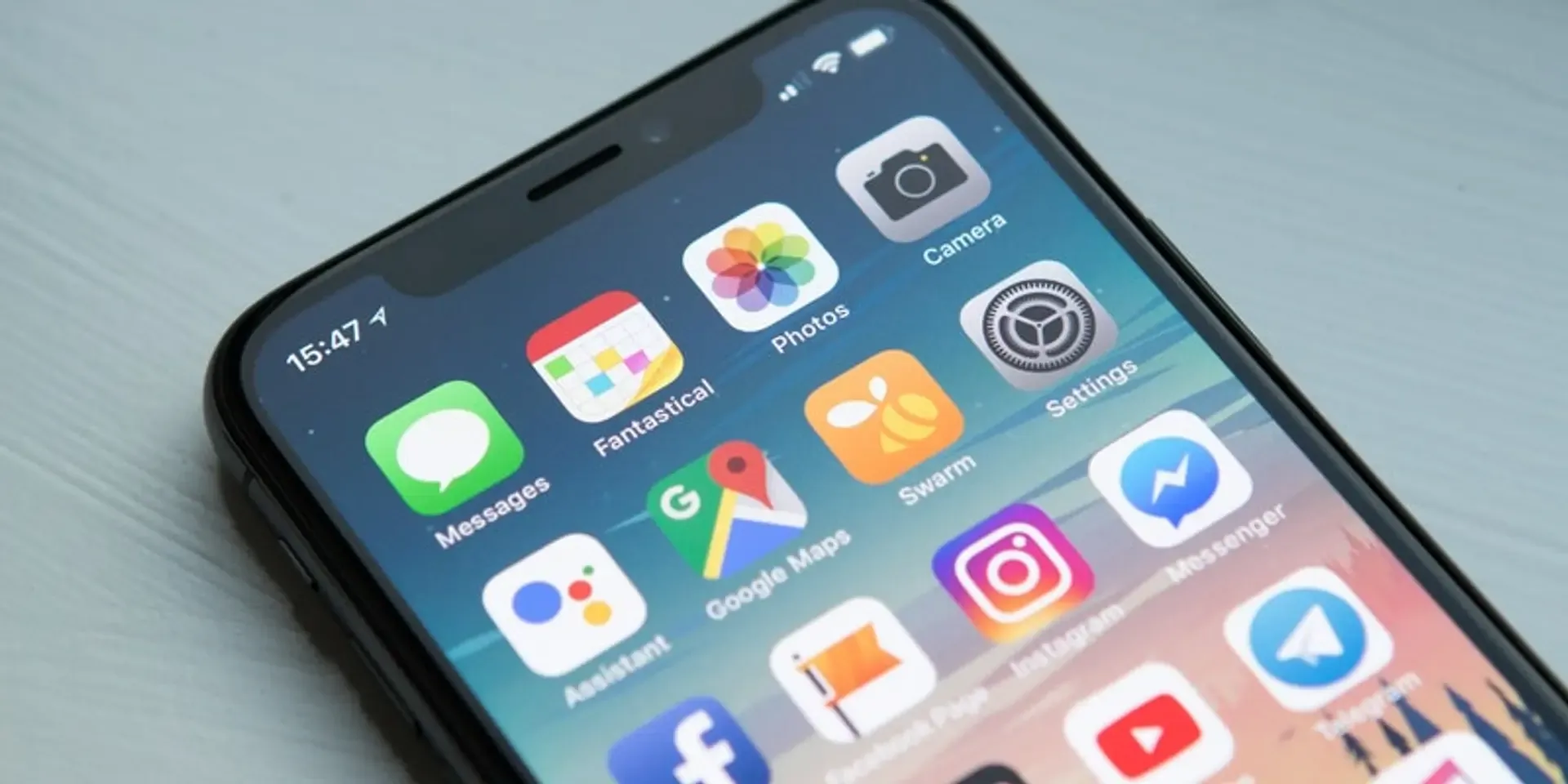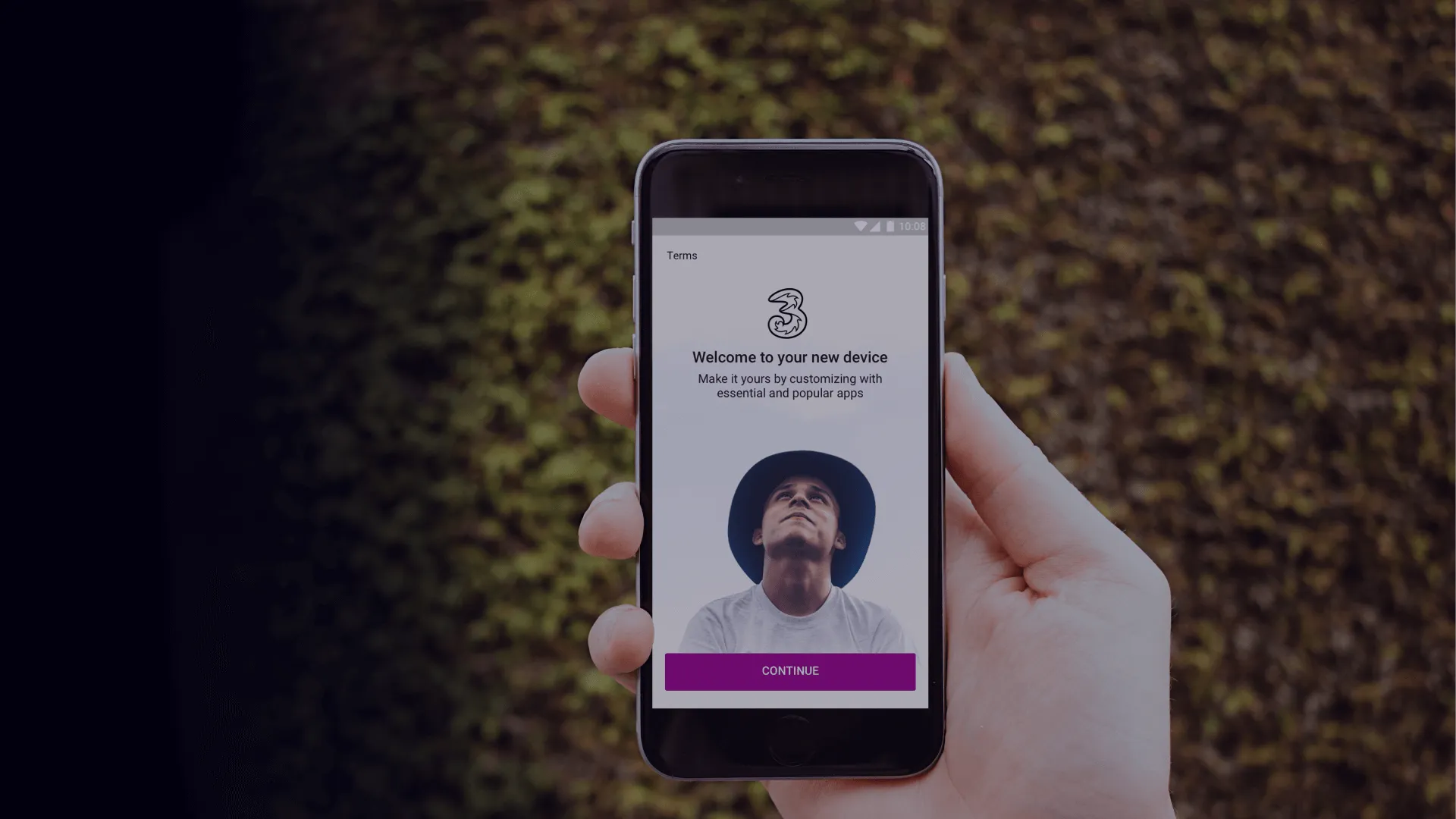In today’s fast-paced digital world, mobile app performance is a key factor that determines user satisfaction and retention. A high-performing app not only delivers a seamless user experience but also builds trust and encourages users to engage further. Whether you’re an app developer, designer, or project manager, knowing how to enhance your app’s performance is critical for success.
This article compiles 100+ tips for improving mobile app performance, categorized into groups of 10, with each group addressing a specific area. These tips will help you optimize your app for speed, reliability, and user satisfaction, ensuring it stands out in a competitive market.

Optimizing Code and Architecture
The foundation of any high-performing mobile app lies in its code and architecture. Writing clean, efficient code and designing a scalable architecture ensures that your app can handle growth and deliver a smooth user experience.
- Write clean and modular code
- Clean code is easier to maintain and debug, reducing the likelihood of performance issues.
- Minimize the use of global variables
- Excessive global variables can cause memory leaks and slow down your app.
- Use lazy loading for resources
- Load assets only when they are needed to save memory and reduce load times.
- Adopt a multi-threaded approach
- Utilize background threads for heavy tasks to keep the user interface responsive.
- Optimize loops and recursion
- Inefficient loops can consume resources; use them sparingly and optimize for performance.
- Avoid unnecessary libraries and frameworks
- Using too many external libraries can increase app size and reduce speed.
- Refactor code regularly
- Periodic refactoring ensures that your code remains optimized and free of redundancies.
- Implement asynchronous programming
- Non-blocking operations improve responsiveness and enhance user experience.
- Utilize caching mechanisms
- Cache frequently used data to reduce redundant computations and speed up app performance.
- Monitor and fix memory leaks
- Regularly test your app for memory leaks to prevent slowdowns and crashes.
A strong codebase and architecture form the backbone of a high-performing app. These tips ensure that your app is built to be efficient, scalable, and reliable from the ground up.

Enhancing App Loading Speed
An app’s loading speed significantly impacts user retention—users expect apps to load in under three seconds. Focusing on improving load times can lead to a better first impression and increased user engagement.
- Minimize app size
- Keep your app lightweight by compressing resources and removing unnecessary assets.
- Compress images and videos
- Use optimized formats like WebP for images and H.264 for videos to reduce file size.
- Implement splash screens effectively
- Use splash screens to create an engaging loading experience without frustrating users.
- Pre-load critical content
- Load essential resources first to make the app usable as quickly as possible.
- Bundle assets efficiently
- Group related assets to reduce the number of network requests during loading.
- Use a Content Delivery Network (CDN)
- Distribute assets through a CDN to reduce latency and improve download speeds.
- Optimize API calls
- Batch API requests and reduce their frequency to speed up data retrieval.
- Leverage HTTP/2 for faster communication
- Use HTTP/2 to improve data transfer speed between the app and server.
- Enable gzip or Brotli compression
- Compress data sent from servers to reduce load times.
- Conduct regular performance profiling
- Use tools like Android Profiler and Xcode Instruments to identify and fix bottlenecks.
By addressing load speed, you set the stage for a positive user experience from the moment the app is opened.

Optimizing Network Usage
Efficient network usage is crucial for mobile app performance, particularly for apps that rely on real-time data or frequent server communication. Reducing unnecessary network calls can save bandwidth, improve speed, and enhance reliability.
- Use a RESTful API or GraphQL
- Choose the most efficient API design for your app’s data needs.
- Implement offline functionality
- Allow users to access key features without an internet connection.
- Reduce redundant API requests
- Cache data locally to avoid unnecessary server calls.
- Optimize server response times
- Ensure that your servers are configured for low-latency responses.
- Compress network responses
- Send compressed data to reduce bandwidth consumption and speed up downloads.
- Implement retry and backoff strategies
- Handle failed requests gracefully and retry with exponential backoff.
- Use HTTP caching headers
- Utilize headers like ETag and Cache-Control to improve data retrieval speed.
- Stream data instead of loading in bulk
- For large datasets, use streaming to load only the data needed.
- Secure communication with HTTPS
- Encrypt all network communication to ensure security and reliability.
- Monitor network usage with analytics
- Use tools like Firebase Performance Monitoring to track and optimize network activity.
These strategies not only improve your app’s speed and reliability but also enhance user trust by providing a seamless online experience.

Improving User Interface (UI) Performance
The user interface is where users interact with your app, so ensuring smooth and responsive UI performance is essential. A well-optimized UI keeps users engaged and prevents frustration caused by delays or glitches.
- Use lightweight UI components
- Avoid overly complex elements that can slow down rendering.
- Optimize animations
- Use hardware-accelerated animations for smooth transitions and interactions.
- Minimize overdraws
- Reduce the number of times pixels are redrawn by optimizing layouts.
- Implement lazy loading for UI elements
- Load UI components only when they come into view to conserve resources.
- Simplify navigation structures
- Use clear, efficient navigation patterns to enhance usability.
- Test for touch responsiveness
- Ensure that buttons and gestures respond instantly to user input.
- Reduce layout hierarchy depth
- Flatten UI hierarchies to improve rendering times.
- Use vector graphics instead of bitmaps
- Scalable vector graphics reduce memory usage and improve resolution.
- Optimize scrolling performance
- Preload data and images for smoother scrolling, especially in list views.
- Ensure compatibility across devices
- Test your UI on different screen sizes and resolutions to maintain a consistent experience.
By focusing on UI performance, you ensure that users enjoy a fluid and visually appealing app experience.

Enhancing Battery Efficiency
Mobile app performance isn’t just about speed and responsiveness; it’s also about optimizing battery usage. Apps that drain battery life excessively can frustrate users and lead to uninstalls. These tips help ensure your app runs efficiently without compromising the device’s battery.
- Minimize background processes
- Limit background tasks to reduce unnecessary energy consumption.
- Use efficient location tracking
- Implement GPS tracking only when necessary and opt for low-power modes.
- Optimize data synchronization frequency
- Avoid frequent sync operations and schedule them during idle times.
- Reduce CPU wake-ups
- Limit how often your app wakes the CPU to perform tasks.
- Use power-efficient libraries
- Choose libraries designed to minimize resource consumption.
- Disable unused sensors
- Avoid keeping sensors like accelerometers and gyroscopes active unnecessarily.
- Optimize network requests
- Batch network requests to reduce energy usage during data transfer.
- Test on real devices for power usage
- Use tools like Android Battery Historian or iOS Instruments to monitor battery impact.
- Implement dark mode
- On devices with OLED screens, dark mode can significantly reduce battery consumption.
- Provide battery usage insights to users
- Show users how your app minimizes battery consumption to build trust.
These strategies ensure your app runs smoothly without being a drain on device resources, creating a better user experience.

Improving Security and Privacy
Security and privacy are fundamental to modern mobile app performance. Users are more likely to engage with apps that protect their data and provide a secure environment. These tips focus on safeguarding user information and ensuring your app complies with data protection standards.
- Encrypt sensitive data
- Use AES encryption for local storage and SSL/TLS for network communication.
- Implement secure user authentication
- Use multi-factor authentication and biometrics for added security.
- Secure API endpoints
- Validate requests on the server-side and implement rate limiting.
- Avoid storing sensitive data on the device
- Store confidential information on secure servers, not locally.
- Regularly update security libraries
- Keep your app’s libraries and frameworks up to date to address vulnerabilities.
- Protect user input
- Use input validation to prevent SQL injection and other attacks.
- Use app transport security (ATS)
- Ensure all data exchanges occur over secure HTTPS connections.
- Comply with data privacy regulations
- Follow GDPR, CCPA, and other relevant privacy standards to protect user rights.
- Alert users about data access
- Provide transparency about why and how your app accesses user data.
- Conduct regular security audits
- Periodically review your app’s security measures to identify and resolve weaknesses.
A secure app fosters trust and ensures users feel confident about engaging with your platform.

Leveraging Analytics for Performance Insights
Analytics are essential for understanding how users interact with your app and identifying areas for improvement. By leveraging analytics, you can optimize performance and ensure your app meets user expectations.
- Integrate performance monitoring tools
- Use tools like Firebase Performance Monitoring or New Relic for real-time insights.
- Track user engagement metrics
- Measure retention rates, session lengths, and active user counts to gauge success.
- Monitor crash reports
- Use services like Crashlytics to identify and fix app crashes.
- Analyze user flow
- Study how users navigate your app to streamline the experience.
- Collect feedback through in-app surveys
- Direct user input can highlight performance issues and improvement areas.
- Track app startup time
- Monitor how long your app takes to load and optimize where needed.
- Identify memory usage trends
- Track and analyze memory consumption patterns to prevent slowdowns.
- Monitor API call performance
- Evaluate the speed and reliability of API interactions.
- Evaluate screen load times
- Track how quickly different screens load and identify bottlenecks.
- Use A/B testing for improvements
- Experiment with UI changes, new features, and optimizations to find what works best.
By using analytics effectively, you gain actionable insights to continually enhance your app’s performance.

Ensuring Cross-Platform Compatibility
For apps available on multiple platforms, ensuring consistent performance across devices is critical. These tips help you deliver a seamless experience regardless of the operating system or hardware.
- Use a cross-platform development framework
- Tools like Flutter or React Native simplify cross-platform compatibility.
- Test on diverse devices
- Regularly test your app on different screen sizes, operating systems, and hardware configurations.
- Optimize for older OS versions
- Ensure your app runs smoothly on older versions of Android and iOS.
- Implement responsive design
- Adapt your app’s UI to fit various screen sizes and resolutions.
- Use adaptive icons and layouts
- Ensure your app looks polished on all platforms with dynamic icons and layouts.
- Minimize platform-specific dependencies
- Use generic solutions that work across multiple operating systems.
- Check for compatibility with popular devices
- Focus on optimizing performance for the most commonly used smartphones and tablets.
- Optimize asset loading across platforms
- Use platform-specific optimizations for images, videos, and other media.
- Implement platform-specific gestures
- Ensure intuitive navigation by tailoring gestures to each operating system.
- Regularly update SDKs and tools
- Keep your development tools updated to ensure compatibility with the latest platform features.
Cross-platform compatibility ensures that your app delivers a high-quality experience for all users, no matter their device or OS.

Reducing App Crashes and Bugs
App crashes and bugs are among the most frustrating experiences for users and can lead to uninstalls and negative reviews. Ensuring your app is stable and reliable is essential for maintaining user trust and engagement.
- Conduct rigorous QA testing
- Use manual and automated testing to identify and resolve issues before release.
- Implement error handling mechanisms
- Gracefully manage exceptions to prevent crashes and inform users about errors.
- Use a crash reporting tool
- Tools like Crashlytics or Sentry help you track and fix app crashes efficiently.
- Test edge cases thoroughly
- Simulate scenarios such as low battery, weak network, or full storage to ensure stability.
- Keep third-party libraries updated
- Outdated libraries can introduce compatibility issues and crashes.
- Use logging for debugging
- Implement robust logging to track issues during development and live usage.
- Limit app updates to essential changes
- Test thoroughly before releasing updates to avoid introducing new bugs.
- Optimize database operations
- Reduce data handling errors by ensuring efficient and reliable database management.
- Validate user input rigorously
- Prevent crashes by sanitizing and validating all user inputs.
- Fix small bugs before they escalate
- Address minor issues promptly to prevent them from causing larger problems.
A stable app is key to user satisfaction, and these tips help ensure reliability while minimizing crashes and errors.

Enhancing Scalability and Future-Proofing
As your user base grows, your app needs to handle increased demand without compromising performance. These tips focus on building a scalable app that adapts to growth and remains relevant in the future.
- Design a scalable architecture
- Use microservices or modular designs to handle growth seamlessly.
- Implement cloud-based solutions
- Leverage platforms like AWS or Google Cloud for scalable storage and processing power.
- Optimize database queries
- Use indexing and efficient queries to handle larger datasets.
- Load test your app regularly
- Simulate high user loads to ensure your app can handle spikes in traffic.
- Use versioning for APIs
- Maintain backward compatibility while updating features for future users.
- Plan for multilingual support
- Design your app to support multiple languages for global scalability.
- Integrate modular updates
- Allow for incremental updates without requiring a complete app overhaul.
- Monitor server performance constantly
- Use tools to track server uptime and response times as user demand increases.
- Adopt CI/CD pipelines
- Continuous Integration and Continuous Deployment streamline updates and scalability.
- Keep up with platform updates
- Regularly adapt your app to changes in Android, iOS, and third-party tools.
Scalability ensures your app grows with your audience, delivering a reliable experience no matter the demand.

Focusing on User-Centric Design
An app’s performance isn’t just technical—it also depends on how effectively it meets user needs. Prioritizing user-centric design improves satisfaction and retention by ensuring intuitive and enjoyable experiences.
- Use user feedback to guide improvements
- Regularly collect and implement suggestions from users to enhance functionality.
- Test usability with real users
- Observe users interacting with your app to identify pain points and areas for improvement.
- Simplify navigation
- Use clear menus and logical flows to help users find what they need quickly.
- Provide clear error messages
- Avoid technical jargon and offer actionable solutions when issues arise.
- Ensure accessibility for all users
- Include features like screen reader compatibility and adjustable font sizes.
- Personalize user experiences
- Use data to tailor content and features based on individual preferences.
- Minimize user inputs
- Reduce the number of fields and steps required to complete tasks.
- Include a comprehensive help section
- Provide FAQs, tutorials, and contact options to assist users effectively.
- Test for ease of use on different devices
- Ensure your app functions intuitively across various screen sizes and hardware.
- Regularly update design based on trends
- Keep your app visually appealing and modern to align with user expectations.
User-centric design bridges the gap between technical excellence and satisfying user experiences, ensuring your app remains engaging and efficient.

Improving mobile app performance is a multifaceted process that involves optimizing every aspect, from code and architecture to user experience and scalability. These 100+ tips provide actionable steps to enhance speed, reliability, security, and engagement.
A high-performing app doesn’t just attract users—it retains them by delivering consistent value and a seamless experience. By adopting these best practices, you can create an app that stands out in a competitive market, ensuring long-term success and user satisfaction. Whether you’re a seasoned developer or just starting, these tips will guide you toward building an app that exceeds expectations.


